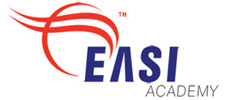 |
Teaching Philosophy (Outline) |
Just as important as what is being taught is how it is taught. The EASI method is contact-based (a result) rather than finish-based (an activity). This is based on the latest research into the human learning process by Professor Ellen Langer at Harvard. The point of Langer's research is that the human learns fastest when a subject or idea is taught based on relevance and purpose. For example, Langer points out that teaching the events that make up history by dates requires rote memorization that is easily forgotten shortly after the relevant test or after the course is finished. On the other hand, teaching the relevance of an event and its impact on all that followed and how it affected the world we presently live in will more likely assure that the event will be remembered for its significance. Professor Langer further notes that encouraging a student to explore and experiment with their own ideas will enhance learning. And further still, encouraging creative thought and freedom will also accelerate learning. On the other hand, teaching by rote repetition, or teaching based on activities rather than results, stifles the imagination, creativity and individual initiative of the student, producing a student that cannot easily adapt to new and novel circumstances. Match play requires the student to constantly adapt to the changing circumstances of the flight of the ball and the course of the match. Hence a player, or any student of any subject, taught by rote repetition will in general perform below the level of their capability and will not compete well against a highly adaptable student with lesser skills. To this end, EASI methods encourages creativity, Experimentation and Exploration of all ideas, Adaptability, Autonomy, Self determination. Self Advocacy, Imagination, and Individual Initiative. In order to carry out this program of instruction:
The first phase of instruction with a new student is the discovery phase. During this stage the instructor just feeds balls to discover a student's central tendencies and reflexes and to see what they can do based on their own experience or genetic predisposition. This may take as much as a half an hour due to factors of nervousness and the student's preconceptions about what is expected of them. Preconceptions and reflexes may obscure a student's real abilities so they must be addressed early. After the initial discovery phase is complete (discovery will go on throughout the student's learning process) the development phase begins. Once we have an initial idea of what the student can and cannot do, we can begin to introduce the key ideas of the various grips and what they can do and move on to contact, extension, elbow position, and movement. |
||